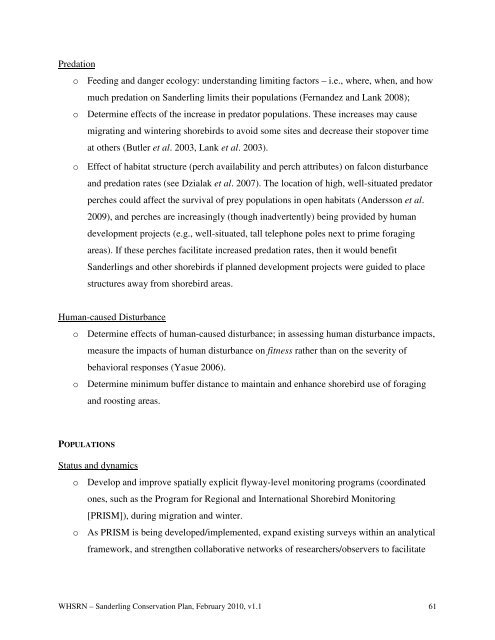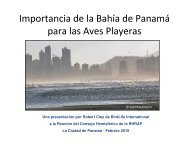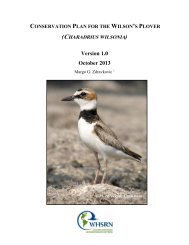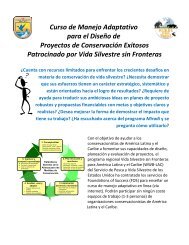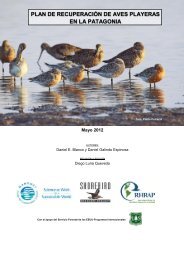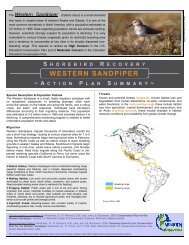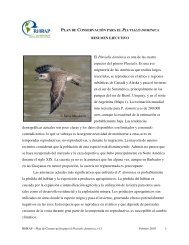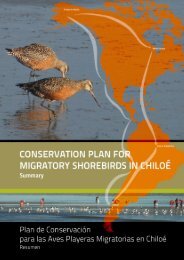Sanderling Plan - Western Hemisphere Shorebird Reserve Network
Sanderling Plan - Western Hemisphere Shorebird Reserve Network
Sanderling Plan - Western Hemisphere Shorebird Reserve Network
Create successful ePaper yourself
Turn your PDF publications into a flip-book with our unique Google optimized e-Paper software.
Predation<br />
o Feeding and danger ecology: understanding limiting factors – i.e., where, when, and how<br />
much predation on <strong>Sanderling</strong> limits their populations (Fernandez and Lank 2008);<br />
o Determine effects of the increase in predator populations. These increases may cause<br />
migrating and wintering shorebirds to avoid some sites and decrease their stopover time<br />
at others (Butler et al. 2003, Lank et al. 2003).<br />
o Effect of habitat structure (perch availability and perch attributes) on falcon disturbance<br />
and predation rates (see Dzialak et al. 2007). The location of high, well-situated predator<br />
perches could affect the survival of prey populations in open habitats (Andersson et al.<br />
2009), and perches are increasingly (though inadvertently) being provided by human<br />
development projects (e.g., well-situated, tall telephone poles next to prime foraging<br />
areas). If these perches facilitate increased predation rates, then it would benefit<br />
<strong>Sanderling</strong>s and other shorebirds if planned development projects were guided to place<br />
structures away from shorebird areas.<br />
Human-caused Disturbance<br />
o Determine effects of human-caused disturbance; in assessing human disturbance impacts,<br />
measure the impacts of human disturbance on fitness rather than on the severity of<br />
behavioral responses (Yasue 2006).<br />
o Determine minimum buffer distance to maintain and enhance shorebird use of foraging<br />
and roosting areas.<br />
POPULATIONS<br />
Status and dynamics<br />
o Develop and improve spatially explicit flyway-level monitoring programs (coordinated<br />
ones, such as the Program for Regional and International <strong>Shorebird</strong> Monitoring<br />
[PRISM]), during migration and winter.<br />
o As PRISM is being developed/implemented, expand existing surveys within an analytical<br />
framework, and strengthen collaborative networks of researchers/observers to facilitate<br />
WHSRN – <strong>Sanderling</strong> Conservation <strong>Plan</strong>, February 2010, v1.1 61


